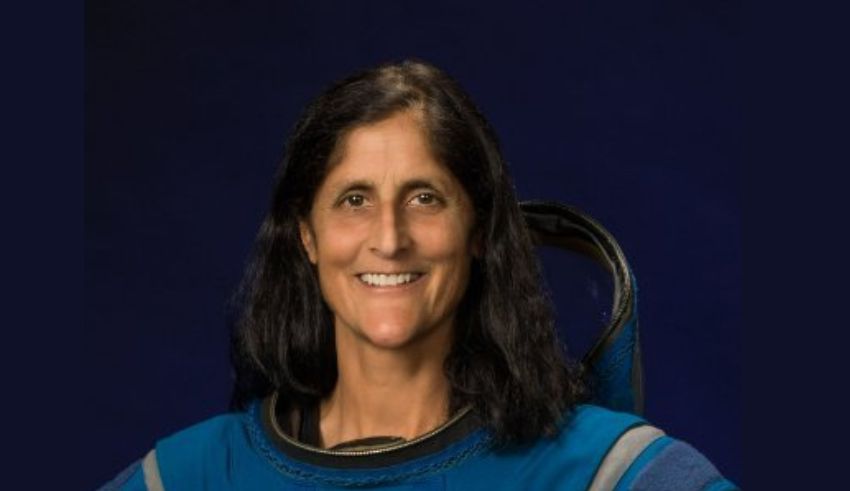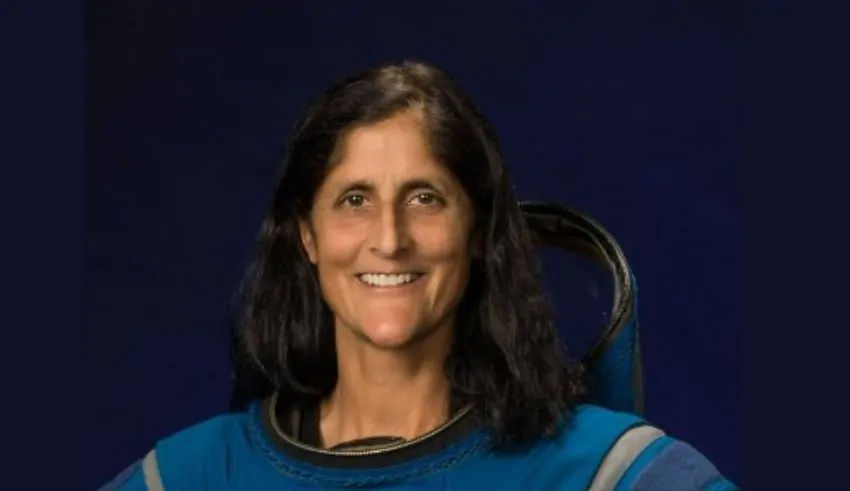

(C) Sunita Williams
Growing public interest in the health of astronaut Sunita Williams, who has been stranded on the International Space Station (ISS) for more than 150 days, NASA has responded. Williams appearing “gaunt” is causing growing worry, although the space agency has formally declared that Williams and the other ISS astronauts are in fine shape. This NASA confidence relates to an alarming incident involving four SpaceX Crew-8 members who returned from orbit and were hospitalized. Their medical issues have begged more questions on the psychological and physical consequences of protracted space missions.
Early this week, worries about Williams’ health surfaced when a September 24 photo saw her obviously thinner with sunken cheeks. The public image scared medical professionals, hence some of them began to speculate whether Williams may have reduced a lot of weight. Based on his recommendations, Seattle-based pulmonologist Dr. Vinay Gupta advised Williams’ appearance might reveal a calorie shortfall, which is common for astronauts on long flights. He pointed out that different physiological changes brought about by food limits, low physical activity, and microgravity naturally lead to weight loss seen by astronauts on long-term space missions.
NASA quickly discounted any serious health concerns expressed by Williams, though. Every astronaut on the ISS is routinely assessed by flight surgeons on regular medical visits, the agency emphasized. NASA spokeswoman Jimi Russell stressed that Williams is in good health and that space agencies are appropriate to meet the demands of long-term space missions together with her other astronauts. The thorough medical treatments in place to monitor astronauts’ status and ensure their continued fit during missions provide NASA’s guarantee. Apart from scheduled trips and frequent examinations, the astronauts have direct access to medical experts and support.
Long spans of existence provide little challenges aboard the ISS. Apart from loss of muscle mass and bone density, astronauts are exposed to strong radiation which can produce a variety of health problems including kidney stones, vision problems, and even increases of vulnerability to infections. Long-term missions six months to a year or more increase these environmental and physical pressures.
NASA reports Williams and her team are in good health, although protracted space travel clearly changes the human body. Usually during four to six month missions, changes in body composition, muscle atrophy, and bone demineralization cause astronauts to lose roughly five percent of their body weight. Though Williams’s appearance in the picture was concerning, Dr. Gupta pointed out that this most likely results from long-term stress and wandering Williams from living in microgravity. He added that since the human body changes significantly in space, astronauts may seem physically different when returning.
Williams may seem small in the picture, but Dr. Gupta stressed even more that weight loss is not rare for astronauts on extended space missions. Though he agreed her circumstances call for constant supervision, he said he based on the photo he did not believe Williams was in immediate danger. Still, Dr. Gupta emphasized that since the body responds to long distance flying in a complex way, astronauts’ health has to be properly monitored.
Rising criticism on astronaut health results from NASA’s decision to maintain strict secrecy on the hospitalization of four astronauts from the SpaceX Crew-8 mission following long-distance space flight. The crew-8 members had spent almost eight months on the ISS before returning to Earth on October 25. Upon their return, all four astronauts were hospitalized for medical evaluations; three were released that same day; one needed overnight care for an undisclosed issue. NASA has not revealed any details on the degree of their medical concerns, which encourages greater speculation that the astronauts’ health problems could be related to their continuous interaction with the hostile atmosphere of space.
NASA’s refusal to disclose which astronaut required overnight hospitalization or the specific medical issues they ran across calls into doubt the agency’s transparency in managing astronaut health. The space agency claims that hiding this kind of information was done so to protect crew member privacy. NASA’s stance has sparked debates about the degree of transparency required on astronaut health, particularly in cases when such issues could have a major impact on forthcoming missions. Some critics claim that more openness is needed to sufficiently inform the public and the space community on the health risks related with extended space missions.
Human body obviously suffers physiologically in space flight. Long term living in space affects practically every feature of the body, including cardiovascular health and bone density. Microgravity causes muscular atrophy since astronauts do not engage the necessary frequent physical exercise required to maintain muscle mass on Earth. Likewise, a big problem is bone loss since bones degrade without constant influence of gravity. Astronauts experience alterations in eyesight that could increase eye pressure when their body floats higher in microgravity.
Apart from these issues, longer distance flight increases human radiation exposure. Although the ISS provides some protective shielding, space is a dangerous place and astronauts bear the risk of radiation exposure with long-term consequences including cancer. Still under a lot of investigation, the long-term effects of space radiation are not exactly clear-cut.
As NASA and other space agencies get ready for next long-term trips to the Moon and Mars, the first concern will always be the health and well-being of astronauts. Long distance trips to the Moon and beyond will expose astronauts to significantly greater challenges since they will spend more time far from Earth’s shielding atmosphere and gravity. The health risks associated with such travels are not particularly small; so, the success of human exploration outside Earth hinges on addressing these problems.
Astronauts heading for Mars, for example, will have to spend many months in orbit before spending some time on the Red Planet. Living on Mars will provide far more challenges since astronauts would not have access to the same tools and help on the ISS. Thus, guaranteeing the health and safety of astronauts on such missions requires considerable advancements in medical technology, astronaut education, health monitoring as well as in astronaut training.
Apart from catering to the acute medical problems of astronauts, space agencies like NASA are also encouraging long-term solutions to lower the hazards of space flight. Research on modifications in fitness programs, medicinal treatments, even space habitat architecture is under work to help astronauts control the physical challenges of space. For example, part of astronauts’ programs on the ISS aimed to counteract muscle and bone loss includes exercise. But new technologies and treatments will most definitely be needed to address the specific medical problems brought on by long-term journeys to far-off worlds.
Basically, even although NASA has reassured the public about Sunita Williams’ health and the welfare of the astronauts on the ISS, ongoing health problems and the inexplicable hospitalization of Crew-8 astronauts highlight the main challenges presented by long-term space missions. Success of further missions depends on maintaining astronauts’ health and safety as space flight advances. Particularly if missions fly farther from Earth and stay for even longer periods of time, the experiences of astronauts like Williams and the Crew-8 team will definitely have a significant influence on the direction of space flight.
The Ministry of Foreign Affairs (MFA) in Singapore has upped its travel warning for Singaporeans by advising against travelling to…
With the aim of honoring the stellar performers and achievers in the music industry of South Korea, the yearly prestigious…
Children’s favourite and globally acclaimed ‘Cocomelon’ is known for their appealing animated videos which features nursery rhymes, educational songs, and…
ExecuJet MRO Services Malaysia has a reason to smile as its maintenance, repair and overhaul (MRO) received the Japan Civil…
Sony is known for catering premium quality in all types of electronics products they make for their users with their…
The European Union and Singapore agreed to a transformative Digital Trade Agreement which serves to deepen their economic relations through…
This website uses cookies.
Read More